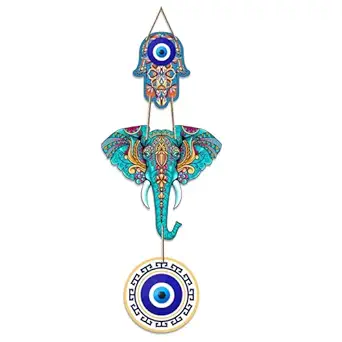सबरीमाला मंदिर (केरल) - भगवान अयप्पा का पवित्र निवास
परिचय
भगवान अयप्पा को समर्पित सबरीमाला मंदिर भारत के सबसे प्रतिष्ठित तीर्थ स्थलों में से एक है। केरल में पश्चिमी घाट के घने जंगलों के बीच बसा यह मंदिर हर साल लाखों भक्तों को आकर्षित करता है, जो इसे दुनिया के सबसे बड़े वार्षिक तीर्थयात्राओं में से एक बनाता है।
अन्य मंदिरों के विपरीत, सबरीमाला में सख्त रीति-रिवाजों और परंपराओं का पालन किया जाता है, जिसके तहत श्रद्धालुओं को तीर्थयात्रा से पहले 41 दिन का व्रत (तपस्या) करना पड़ता है। मंदिर अपनी अनूठी परंपराओं के लिए जाना जाता है, जिसमें मासिक धर्म की आयु (10-50 वर्ष) की महिलाओं के मंदिर में प्रवेश पर प्रतिबंध शामिल है।
1. सबरीमाला मंदिर की किंवदंती
सबरीमाला का इतिहास हिंदू पौराणिक कथाओं में गहराई से निहित है और यह भगवान अयप्पा की कहानी से जुड़ा है, जिन्हें धर्म शास्त्र के नाम से भी जाना जाता है।
1.1 भगवान अयप्पा का जन्म
किंवदंती के अनुसार, भगवान अयप्पा का जन्म भगवान शिव और मोहिनी (भगवान विष्णु का अवतार) से हुआ था। उन्हें राजा पंडालम ने एक राजकुमार के रूप में पाला था, जिन्होंने उन्हें पंपा नदी के तट पर एक शिशु के रूप में पाया था।
1.2 महिषी की हार
बड़े होने पर, अयप्पा को राक्षसी महिषी को हराने के लिए भेजा गया, जो दुनिया को आतंकित कर रही थी। महिषी का वध करने के बाद, अयप्पा को दिव्य ज्ञान प्राप्त हुआ और वे परमात्मा में विलीन हो गए, उन्होंने सबरीमाला को अपना शाश्वत निवास चुना।
1.3 'तत् त्वम् असि' का महत्व
मंदिर के प्रवेश द्वार पर "तत् त्वम् असि" (वह तू ही है) वाक्यांश अंकित है, जो व्यक्तिगत आत्मा और परमात्मा की एकता को दर्शाता है।
2. सबरीमाला में अनोखी परंपराएँ और अनुष्ठान
2.1 41 दिवसीय व्रतम (तपस्या अवधि)
तीर्थयात्रा पर जाने से पहले, भक्तों को 41 दिनों की कठोर तपस्या करनी चाहिए, जिसमें शामिल हैं:
शराब, मांस और सांसारिक सुखों से दूर रहना
काला, नीला या केसरिया परिधान पहनना
नंगे पैर चलना
दिन में दो बार स्नान करना और ब्रह्मचर्य का पालन करना
भक्ति और ध्यान का अभ्यास करना
2.2 इरुमुडी केट्टू - पवित्र यात्रा किट
भक्त इरुमुडी केट्टू, घी, नारियल और प्रसाद से भरा दो डिब्बे वाला बैग लेकर चलते हैं, जो उनकी आध्यात्मिक यात्रा का प्रतीक है।
2.3 सबरीमाला की यात्रा
मंदिर 914 मीटर (3,000 फीट) की ऊँचाई पर एक पहाड़ी के ऊपर स्थित है।
भक्त घने जंगलों और खड़ी पहाड़ियों से होते हुए एरुमेली से लगभग 48 किमी की दूरी तय करते हैं।
मंदिर की अंतिम चढ़ाई से पहले पंबा नदी अंतिम पड़ाव है।
2.4 मकर ज्योति - दिव्य प्रकाश
मकर ज्योति एक दिव्य प्रकाश है जो मकर संक्रांति (14 जनवरी) को पोन्नम्बलमेडु पहाड़ी की चोटी पर प्रकट होता है।
लाखों लोग इस पवित्र प्रकाश को देखने के लिए इकट्ठा होते हैं, यह मानते हुए कि यह भगवान अयप्पा का दिव्य रूप है।
3. सबरीमाला मंदिर की वास्तुकला
मंदिर में केरल की पारंपरिक वास्तुकला शैली का पालन किया गया है, जिसमें सोने की परत चढ़ा हुआ गर्भगृह और एक बड़ा प्रांगण है।
मुख्य विशेषताएँ:
18 पवित्र सीढ़ियाँ (पथिनेत्तम पाडी) आध्यात्मिक उत्थान का प्रतीक हैं और भक्तों को इरुमुडी केट्टू को लेकर नंगे पैर चढ़ना चाहिए।
भगवान अयप्पा की मुख्य मूर्ति ध्यान मुद्रा में है और उनके घुटनों के चारों ओर एक योगिक पट्टी बंधी हुई है।
मंदिर परिसर घने जंगलों से घिरा हुआ है, जो तीर्थयात्रा की रहस्यमय आभा को और बढ़ाता है।
4. त्यौहार और महत्वपूर्ण कार्यक्रम
4.1 मंडल पूजा (नवंबर-दिसंबर)
तीर्थयात्रा के मौसम की शुरुआत का प्रतीक है।
भक्त तीर्थयात्रा से पहले 41 दिनों की तपस्या करते हैं।
4.2 मकर विलक्कू (14 जनवरी)
सबरीमाला में सबसे महत्वपूर्ण कार्यक्रम।
भक्त मकर ज्योति (दिव्य प्रकाश) को देखने के लिए एकत्रित होते हैं।
4.3 विशु महोत्सव (अप्रैल)
विशेष पूजा के साथ मलयाली नववर्ष मनाया जाता है।
5. प्रतिबंध और प्रवेश नियम
5.1 सबरीमाला में कौन जा सकता है?
केवल पुरुष भक्त, छोटी लड़कियाँ (10 वर्ष से कम) और बुज़ुर्ग महिलाएँ (50 वर्ष से अधिक) को ही प्रवेश की अनुमति है।
10-50 वर्ष की आयु की महिलाओं को पारंपरिक रूप से अनुमति नहीं दी जाती है क्योंकि भगवान अयप्पा एक नैष्ठिक ब्रह्मचारी (शाश्वत ब्रह्मचारी) हैं।
भारत के सर्वोच्च न्यायालय ने इस मुद्दे पर बहस की है, और यह निर्णय विवादास्पद बना हुआ है।
5.2 भक्तों के लिए ड्रेस कोड
पुरुष काले, नीले या भगवा रंग की धोती पहनते हैं और अपनी दाढ़ी और बाल नहीं कटवाते हैं।
भक्त पूरे तीर्थयात्रा के दौरान नंगे पैर चलते हैं।
6. सबरीमाला मंदिर कैसे पहुँचें?
6.1 हवाई मार्ग
निकटतम हवाई अड्डा कोचीन अंतर्राष्ट्रीय हवाई अड्डा (104 किमी) है।
त्रिवेंद्रम अंतर्राष्ट्रीय हवाई अड्डा (175 किमी) एक अन्य विकल्प है।
6.2 रेल द्वारा
निकटतम रेलवे स्टेशन कोट्टायम (90 किमी) और चेंगन्नूर (84 किमी) हैं।
6.3 सड़क मार्ग
कोट्टायम, कोचीन और त्रिवेंद्रम से पंबा तक बसें और टैक्सियाँ उपलब्ध हैं, जो कि अंतिम मोटर योग्य स्थान है।
पंबा से, भक्त मंदिर तक पहुँचने के लिए 5 किमी की चढ़ाई चढ़ते हैं।
7. मंदिर का समय और दर्शन विवरण
खुलता है: सुबह 4:00 बजे
बंद होता है: सुबह 11:00 बजे और फिर दोपहर 3:00 बजे - रात 11:00 बजे खुलता है
मंदिर विशिष्ट दिनों पर खुलता है:
मंडला पूजा (नवंबर - दिसंबर) और मकर विलक्कु (जनवरी)
प्रत्येक मलयालम महीने के पहले पाँच दिन
विशु (अप्रैल)
8. तीर्थयात्रियों के लिए महत्वपूर्ण दिशा-निर्देश
भीड़ प्रबंधन के लिए सबरीमाला की आधिकारिक वेबसाइट पर दर्शन के लिए ऑनलाइन पंजीकरण करें।
प्लास्टिक और शराब सख्त वर्जित है।
ट्रैकिंग मार्ग पर चिकित्सा सहायता उपलब्ध है।
मंदिर अधिकारियों और वन अधिकारियों के निर्देशों का पालन करें।
9. सबरीमाला मंदिर के बारे में रोचक तथ्य
यह दुनिया की सबसे बड़ी वार्षिक तीर्थयात्राओं में से एक है, जिसमें 50 मिलियन से ज़्यादा श्रद्धालु आते हैं।
18 पवित्र सीढ़ियाँ (पथिनेत्तम पदी) अलग-अलग आध्यात्मिक चरणों का प्रतिनिधित्व करती हैं।
यह मंदिर पेरियार टाइगर रिज़र्व में स्थित है, जो इस यात्रा को आध्यात्मिक और प्रकृति से भरपूर बनाता है।
माना जाता है कि मकर ज्योति वार्षिक तीर्थयात्रा के दौरान भक्तों को आशीर्वाद देने वाली दिव्य ज्योति है।
चुनौतीपूर्ण यात्रा के बावजूद, भक्त भक्ति और विनम्रता के प्रतीक के रूप में नंगे पैर आते हैं।
10. निष्कर्ष
सबरीमाला मंदिर सिर्फ़ एक धार्मिक स्थल नहीं है, बल्कि एक आध्यात्मिक यात्रा है जो भक्तों को शारीरिक और मानसिक दोनों रूप से बदल देती है। भगवान अयप्पा को समर्पित यह मंदिर भक्ति, अनुशासन और एकता का प्रतीक है, जो विभिन्न धर्मों और पृष्ठभूमियों से लाखों भक्तों को आकर्षित करता है।
अगर आप आध्यात्मिक जागृति और दिव्य आशीर्वाद चाहते हैं, तो सबरीमाला तीर्थयात्रा एक ज़रूरी अनुभव है।
स्वामी शरणम अयप्पा!" 🙏
Overview of Sabarimala Temple
Historical Background
Sabarimala Temple in Kerala is an ancient shrine dedicated to Lord Ayyappa, renowned for its rich heritage, legends, and centuries-old traditions.
Religious Significance
The temple is a major pilgrimage site attracting millions of devotees, especially during the Mandala-Makaravilakku season, for spiritual blessings and fulfillment of vows.
Location & Accessibility
Situated atop the Western Ghats in Kerala, Sabarimala is accessible by road and trekking paths, with facilities for devotees from across India.
Legends & Myths
According to mythology, Lord Ayyappa was born to unite the devotees of Vishnu and Shiva, and Sabarimala Temple embodies his divine presence and miracles.
Pilgrimage Popularity
The temple is famous for its challenging trek, strict observances, and the 41-day vratham (penance), attracting millions annually.
Architecture & Design
Temple Structure
Sabarimala Temple showcases traditional Kerala architecture, featuring a sanctum sanctorum, granite steps, and wood-carved pillars, harmonizing nature and spirituality.
Sacred Sanctum
The central sanctum houses the idol of Lord Ayyappa in a meditative posture, attracting devotees for darshan and rituals.
Pathways & Steps
Devotees climb the 18 sacred steps (Pathinettam Padi) after observing strict vratham, signifying spiritual discipline and purification.
Design & Symbolism
The temple’s architectural layout symbolizes devotion, discipline, and connection with the divine, blending natural surroundings with spiritual energy.
Forest & Natural Setting
Located amidst dense forests, the temple’s environment reflects serenity, isolation, and devotion, enhancing the pilgrim experience.
Spiritual Practices & Rituals
Daily Poojas
Priests perform regular rituals and poojas, allowing devotees to participate in worship and seek blessings.
Special Festival Observances
Major festivals like Mandala Pooja and Makaravilakku are celebrated with grand processions, devotional music, and spiritual fervor.
41-Day Vratham
Devotees observe 41 days of austerity, including fasting, celibacy, and abstinence, to purify themselves before visiting the temple.
Offerings & Devotions
Devotees offer coconut, ghee, and other items as part of rituals, expressing reverence and devotion to Lord Ayyappa.
Chanting & Bhajans
Continuous chanting of Ayyappa mantras and singing bhajans create a devotional ambiance, encouraging collective spiritual energy.
Visitor Information
How to Reach
Sabarimala Temple is accessible via road from Pathanamthitta and Pamba, with trekking options for devotees, providing a mix of adventure and devotion.
Best Time to Visit
The pilgrimage season from November to January is ideal due to festival observances and favorable weather conditions.
Temple Timings
The temple opens early morning and closes in the evening, with special timings during Mandala-Makaravilakku season.
Nearby Facilities
Facilities include accommodation, medical aid, and transport arrangements for devotees along the trekking path and nearby towns.
Travel Tips
Devotees are advised to follow the vratham strictly, carry minimal belongings, and respect temple customs during the pilgrimage.
Festivals & Cultural Significance
Religious Importance
Sabarimala Temple holds immense religious significance, symbolizing devotion, discipline, and unity among devotees from all over India.
Pilgrimage Attraction
Millions undertake the pilgrimage annually, highlighting the temple’s importance in Hindu spiritual culture.
Community Participation
Devotees from diverse regions participate in rituals, poojas, and festivals, fostering communal harmony.
Spiritual Experience
Pilgrims report profound spiritual experiences, personal transformation, and fulfillment of vows at the temple.
Preservation of Tradition
The temple maintains age-old rituals, architectural integrity, and devotional practices, ensuring its spiritual legacy for future generations.
Sabarimala Temple in Kerala is an ancient shrine dedicated to Lord Ayyappa, renowned for its rich heritage, legends, and centuries-old traditions.
The temple is a major pilgrimage site attracting millions of devotees, especially during the Mandala-Makaravilakku season, for spiritual blessings and fulfillment of vows.
Situated atop the Western Ghats in Kerala, Sabarimala is accessible by road and trekking paths, with facilities for devotees from across India.
According to mythology, Lord Ayyappa was born to unite the devotees of Vishnu and Shiva, and Sabarimala Temple embodies his divine presence and miracles.
The temple is famous for its challenging trek, strict observances, and the 41-day vratham (penance), attracting millions annually.
Sabarimala Temple showcases traditional Kerala architecture, featuring a sanctum sanctorum, granite steps, and wood-carved pillars, harmonizing nature and spirituality.
The central sanctum houses the idol of Lord Ayyappa in a meditative posture, attracting devotees for darshan and rituals.
Devotees climb the 18 sacred steps (Pathinettam Padi) after observing strict vratham, signifying spiritual discipline and purification.
The temple’s architectural layout symbolizes devotion, discipline, and connection with the divine, blending natural surroundings with spiritual energy.
Located amidst dense forests, the temple’s environment reflects serenity, isolation, and devotion, enhancing the pilgrim experience.
Priests perform regular rituals and poojas, allowing devotees to participate in worship and seek blessings.
Major festivals like Mandala Pooja and Makaravilakku are celebrated with grand processions, devotional music, and spiritual fervor.
Devotees observe 41 days of austerity, including fasting, celibacy, and abstinence, to purify themselves before visiting the temple.
Devotees offer coconut, ghee, and other items as part of rituals, expressing reverence and devotion to Lord Ayyappa.
Continuous chanting of Ayyappa mantras and singing bhajans create a devotional ambiance, encouraging collective spiritual energy.
Sabarimala Temple is accessible via road from Pathanamthitta and Pamba, with trekking options for devotees, providing a mix of adventure and devotion.
The pilgrimage season from November to January is ideal due to festival observances and favorable weather conditions.
The temple opens early morning and closes in the evening, with special timings during Mandala-Makaravilakku season.
Facilities include accommodation, medical aid, and transport arrangements for devotees along the trekking path and nearby towns.
Devotees are advised to follow the vratham strictly, carry minimal belongings, and respect temple customs during the pilgrimage.
Sabarimala Temple holds immense religious significance, symbolizing devotion, discipline, and unity among devotees from all over India.
Millions undertake the pilgrimage annually, highlighting the temple’s importance in Hindu spiritual culture.
Devotees from diverse regions participate in rituals, poojas, and festivals, fostering communal harmony.
Pilgrims report profound spiritual experiences, personal transformation, and fulfillment of vows at the temple.
The temple maintains age-old rituals, architectural integrity, and devotional practices, ensuring its spiritual legacy for future generations.

Borosil Medium Size Akhand Diya Decorative Brass Glass Oil Lamp | Tea Light Holder | Diya with Borosilicate Glass | Puja Dia for Mandir | Lantern Diya with Glass Cover
Buy Now
ईक्राफ्टइंडिया मल्टीकलर हैंडक्राफ्टेड सजावटी खिड़की-दरवाज़ा दीवार लटकन घंटियाँ
Buy Now